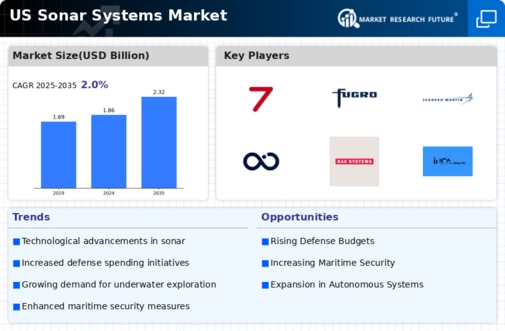The US Sonar Systems Market is characterized by an evolving landscape influenced by advancements in technology, increased investment in defense and exploration sectors, and a growing emphasis on maritime safety and monitoring. As the demand for sophisticated underwater surveillance and navigation systems continues to rise, companies in this space are leveraging innovation to enhance their offerings. Competition is fueled by the need for high-performance, reliable, and cost-effective sonar solutions that cater to various applications, including military, commercial, and research sectors.
As a result, key players are strategically positioning themselves through partnerships, technological advancements, and an expanded product portfolio to capture a significant share of this lucrative market.Raytheon Technologies has established a formidable presence in the US Sonar Systems Market, recognized for its cutting-edge technology and robust product offerings that cater to defense and maritime surveillance needs. The company boasts a strong portfolio of sonar systems that are integral to naval operations and various underwater missions, providing high-resolution imaging and detection capabilities. Raytheon Technologies has invested heavily in research and development, ensuring that it remains at the forefront of innovation.
The company's extensive network and strong relationships with governmental and commercial entities position it well in the competitive landscape, making it a key player in providing advanced sonar solutions and services across various platforms. Its reputation for reliability and customer satisfaction further strengthens its market position, allowing Raytheon Technologies to compete effectively within the US sonar systems industry.Subsea 7 holds a significant position in the US Sonar Systems Market, focusing primarily on providing underwater services and solutions that underpin subsea oil and gas operations.
The company offers a variety of sonar-related services, including seabed mapping and subsea surveillance, which are crucial for both installation and maintenance of underwater infrastructures. Subsea 7's strengths lie in its advanced technological capabilities and strong project management skills, making it an essential partner for energy sector stakeholders. The company's presence in the US is bolstered by strategic mergers and acquisitions that enhance its service offerings and market reach.
Subsea 7's commitment to innovation, alongside its experienced workforce and operational excellence, reinforces its competitive edge in the sonar systems space, allowing it to effectively address the complex needs of the US market.




















